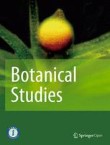New perspectives, additions, and amendments to plant endemism in a North African flora
Endemism is essential in biodiversity, biogeography, and conservation tasks. Based on herbarium specimens kept in some local herbaria, many published literature, and available information, we compiled a compre...
